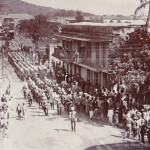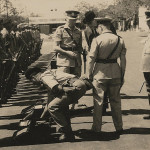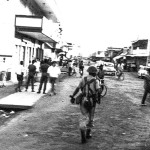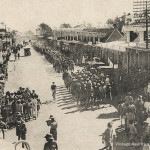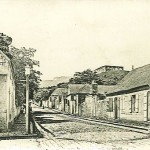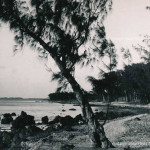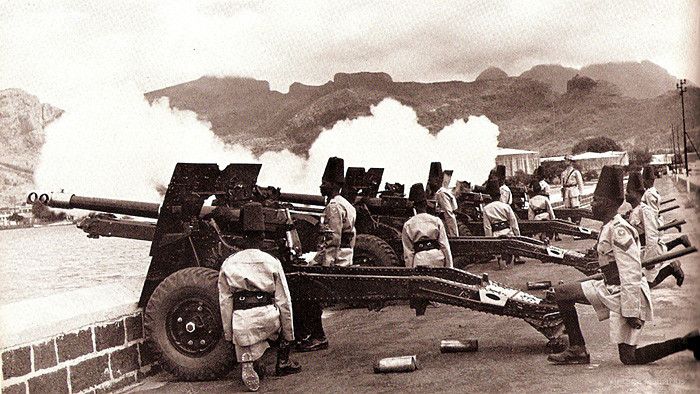
Port Louis – Pleasure Ground – King’s African Rifles Regiment – 1964
The King’s African Rifles Regiment firing canons at the Pleasure Ground (les salines) during Empire Day in 1964. Quite an artillery indeed. Image shared by: France Athow
UPDATE: The year is claimed to be 1952 probably instead of 1964 as originally mentioned.
The King’s African Rifles (KAR) was a multi-battalion British colonial regiment raised from the various British possessions in East Africa from 1902 until independence in the 1960s. It performed both military and internal security functions within the East African colonies as well as external service as recorded hereafter. Rank and file were Africans called askaris, while most officers were seconded from British Army regiments. When raised there were some Sudanese officers in the Uganda-raised battalions and towards the end of British colonial rule African officers were commissioned in the various battalions.
The KAR fought in several campaigns during the War of 1939–1945. It fought against the Italians in Italian East Africa during the East African Campaign, against the Vichy French in Madagascar during the Battle of Madagascar, and against the Japanese in Burma during the Burma Campaign.
Initially the KAR was deployed as the 1st East African Infantry Brigade and the 2nd East African Infantry Brigade. The first brigade was responsible for coastal defence and the second for the defence of the interior. (See 1st SA Infantry Division) By the end of July 1940, two additional East African brigades were formed, the 3rd East African Infantry Brigade and the 6th East African Infantry Brigade. Initially a Coastal Division and a Northern Frontier District Division were planned, but, instead, the 11th African Division and the 12th African Division were formed.
The two divisions included East African, Ghanaian, Nigerian, and South African troops. The Ghanaian and Nigerian troops came from the Royal West African Frontier Force. Under the terms of a war contingency plan, a brigade each was provided from the Gold Coast (now Ghana) and from Nigeria for service in Kenya. A Nigerian brigade, together with two East African brigades (the KAR brigades) and some South Africans, formed the 11th African Division. The 12th African Division was similarly formed, but with the Ghanaian brigade instead of the Nigerian brigade.
In 1941, during the East African Campaign, Sergeant Nigel Gray Leakey of the 1/6th Battalion was awarded the regiment’s first and only Victoria Cross (VC).
The 11th African Division was disbanded in November 1941 and the 12th African Division was disbanded in April 1943. In 1943, the 11th (East Africa) Division was formed and it fought in Burma. In addition, two independent infantry brigades were sent from East Africa to India for service in Burma. The 22 (East Africa) Infantry Brigade served in the Arakan under command of XV Indian Corps, while the 28th (East Africa) Infantry Brigade served under IV Corps, playing a crucial role in the crossing of the Irrawaddy River.
By the end of the war the regiment had raised forty-three battalions (including two in British Somaliland), nine independent garrison companies, an armoured car regiment, an artillery unit, as well as engineer, signal and transport sections.
Source: Wikipedia
